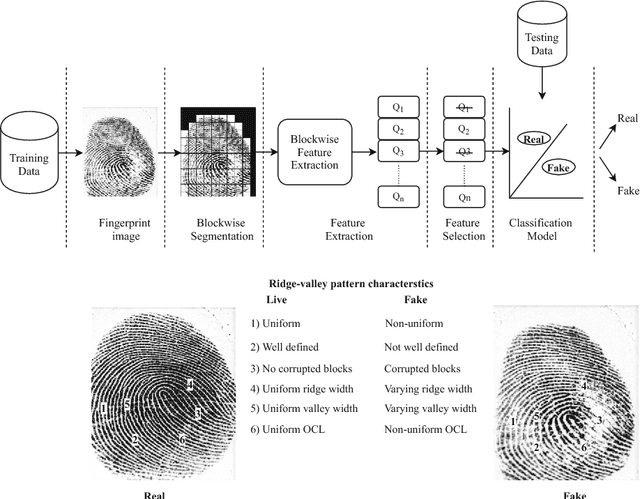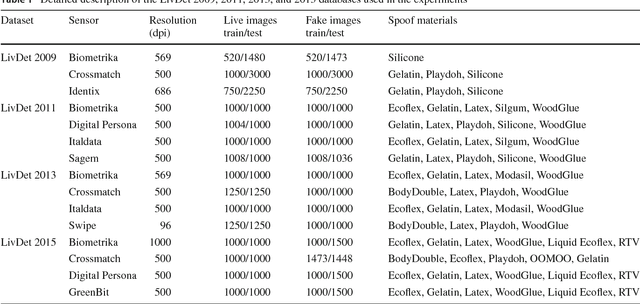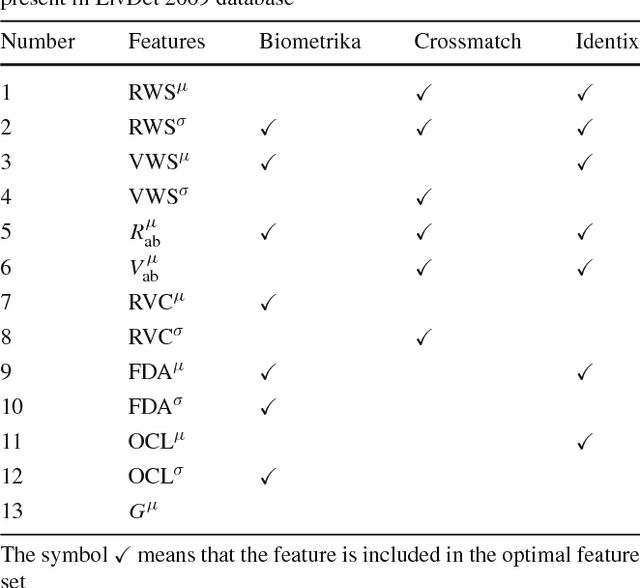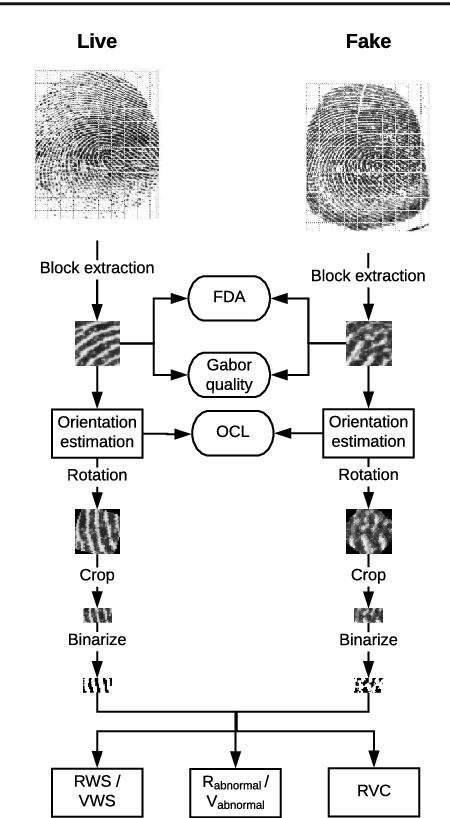Ram Prakash Sharma
DyFFPAD: Dynamic Fusion of Convolutional and Handcrafted Features for Fingerprint Presentation Attack Detection
Aug 19, 2023



Abstract:Automatic fingerprint recognition systems suffer from the threat of presentation attacks due to their wide range of applications in areas including national borders and commercial applications. Presentation attacks can be performed by fabricating the fake fingerprint of a user with or without the intention of the subject. This paper presents a dynamic ensemble of deep learning and handcrafted features to detect presentation attacks in known-material and unknown-material protocols. The proposed model is a dynamic ensemble of deep CNN and handcrafted features empowered deep neural networks both of which learn their parameters together. The proposed presentation attack detection model, in this way, utilizes the capabilities of both classification techniques and exhibits better performance than their individual results. The proposed model's performance is validated using benchmark LivDet 2015, 2017, and 2019 databases, with an overall accuracy of 96.10\%, 96.49\%, and 95.99\% attained on them, respectively. The proposed model outperforms state-of-the-art methods in benchmark protocols of presentation attack detection in terms of classification accuracy.
Fingerprint liveness detection using local quality features
Jun 08, 2018



Abstract:Fingerprint-based recognition has been widely deployed in various applications. However, current recognition systems are vulnerable to spoofing attacks which make use of an artificial replica of a fingerprint to deceive the sensors. In such scenarios, fingerprint liveness detection ensures the actual presence of a real legitimate fingerprint in contrast to a fake self-manufactured synthetic sample. In this paper, we propose a static software-based approach using quality features to detect the liveness in a fingerprint. We have extracted features from a single fingerprint image to overcome the issues faced in dynamic software-based approaches which require longer computational time and user cooperation. The proposed system extracts 8 sensor independent quality features on a local level containing minute details of the ridge-valley structure of real and fake fingerprints. These local quality features constitutes a 13-dimensional feature vector. The system is tested on a publically available dataset of LivDet 2009 competition. The experimental results exhibit supremacy of the proposed method over current state-of-the-art approaches providing least average classification error of 5.3% for LivDet 2009. Additionally, effectiveness of the best performing features over LivDet 2009 is evaluated on the latest LivDet 2015 dataset which contain fingerprints fabricated using unknown spoof materials. An average classification error rate of 4.22% is achieved in comparison with 4.49% obtained by the LivDet 2015 winner. Further, the proposed system utilizes a single fingerprint image, which results in faster implications and makes it more user-friendly.
Two-stage quality adaptive fingerprint image enhancement using Fuzzy c-means clustering based fingerprint quality analysis
May 19, 2018



Abstract:Fingerprint recognition techniques are immensely dependent on quality of the fingerprint images. To improve the performance of recognition algorithm for poor quality images an efficient enhancement algorithm should be designed. Performance improvement of recognition algorithm will be more if enhancement process is adaptive to the fingerprint quality (wet, dry or normal). In this paper, a quality adaptive fingerprint enhancement algorithm is proposed. The proposed fingerprint quality assessment algorithm clusters the fingerprint images in appropriate quality class of dry, wet, normal dry, normal wet and good quality using fuzzy c-means technique. It considers seven features namely, mean, moisture, variance, uniformity, contrast, ridge valley area uniformity and ridge valley uniformity into account for clustering the fingerprint images in appropriate quality class. Fingerprint images of each quality class undergo through a two-stage fingerprint quality enhancement process. A quality adaptive preprocessing method is used as front-end before enhancing the fingerprint images with Gabor, short term Fourier transform and oriented diffusion filtering based enhancement techniques. Experimental results show improvement in the verification results for FVC2004 datasets. Significant improvement in equal error rate is observed while using quality adaptive preprocessing based approaches in comparison to the current state-of-the-art enhancement techniques.
 Add to Chrome
Add to Chrome Add to Firefox
Add to Firefox Add to Edge
Add to Edge